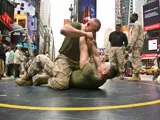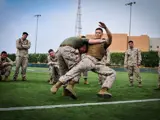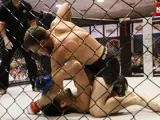Atlantic Division
Central Division
Southeast Division
Northwest Division
Pacific Division
Southwest Division
Martial Arts for Children

I am grateful to the martial arts experts and parents who provided valuable insights, facts, and anecdotal accounts to assist with research for this article. Thank you so much! ~ Maria Morgunova
Martial arts have long been a popular pastime for adults in North America, but it is only during the last 20 years that martial arts have become accessible to children and teenagers. Parents soon came to realize that martial arts training for children provided numerous benefits, from improving health and fitness to learning self-control, self-discipline, responsibility, and purposefulness, while also learning valuable self-defense and anti-bullying skills. Parents were finding that not only were their children becoming more self-confident, their school performance also improved.
Understandably, many parents look for a martial arts club located within their neighborhood where their children can learn karate, aikido, taekwondo, wushu or any other type of recognized martial arts. In fact, there are about 140 different types of martial arts, which can be broadly divided into three groups:
- Martial Arts and Military combat, in which students are taught to survive and defend themselves in critical situations against sudden attacks, or surprise attacks by several attackers.
- Amateur Combative sports, which tend to have more stringent rules and are of a more competitive nature. Typically focused on one-on-one combat, students work towards competing in tournaments and competitions which are focused on a system of point scoring. Participants score points in a variety of ways, with the winner being the person with more points than their opponent, or the competitor who manages to disable their opponent. Students work towards prestigious awards, participation in world-renowned tournaments, and can become a master in their chosen sport and go on to coach others.
- Mixed martial arts, in which a combination of techniques and methods from a variety of different martial arts styles are taught.
Some styles of martial arts teach students how to use and defend against weapons, while others do not.
When parents choose a martial arts club for their children, they usually share a similar set of questions and concerns. With so many different types of martial arts, parents wonder about the advantages and disadvantages of each particular style, which is the most effective and safe for children and teenagers to learn, and what martial arts experts and parents of children currently studying martial would recommend.
Wushu or Kung Fu
Wushu has a long and rich history, originating in China approximately 2,000 years ago. In fact, wushu is much more than martial arts in China but is a system of education. Many Chinese people were brought up in wushu schools, taught the essential skills of reading, writing, and communication. Before long, wushu was introduced to other countries around the world by Chinese immigrants, and the term kung fu was soon adopted. Kung fu schools quickly became popular around the world, with students of Chinese origin and from a wide variety of backgrounds clambering to study kung fu.
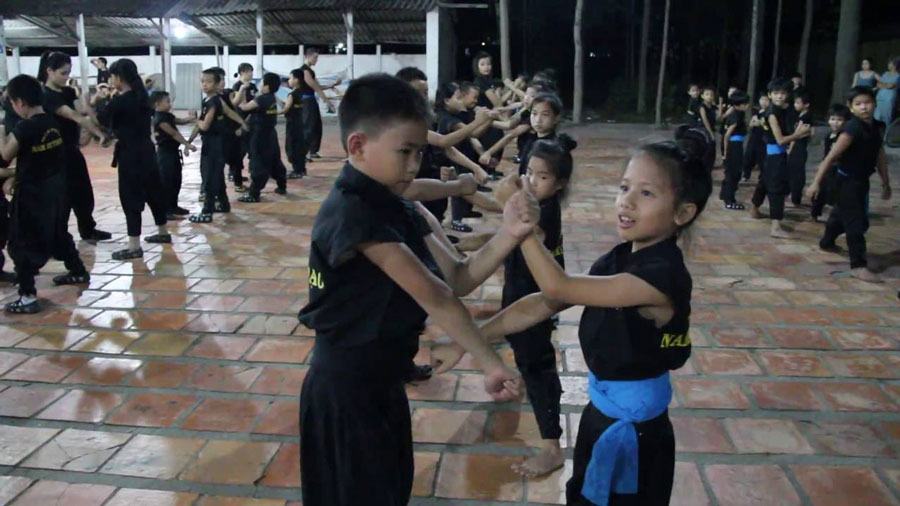
Methods of kung fu teaching can vary, and can sometimes leave students feeling surprised or even frustrated. Several historical stories of unorthodox kung fu teaching methods have made their way into Chinese lore, being passed down from one generation to the next as parables.
For example, we have the story known simply as Water Element. In this story, a male student enrolled at a kung fu school for one year. But from the first day of his training, he was completely disappointed, believing that he was not being taught any essential kung fu skills. As the story goes, the student was required to stand waist deep in water and beat the surface of the water with the palms of his hands all day. Sometime later, his assignment changed somewhat, and he was required to empty a vat of water by hitting and splashing it with his hands, only to refill the vat with water from the stream.
His year of training passed, and the student returned home to his parents for the holidays. Eager to know what their son had learned after a year's kung fu training, the son told his frustrating story of having learned nothing for the entire year. He became so angry that he struck his parents’ table with the palm of his hand. His blow was so strong that the solid tabletop broke instantly, shattering like a dry biscuit. It was at that moment that the student - and his parents - understood that great kung fu masters have the wisdom to train a person in the ancient art without the student even knowing it.
Today, wushu training has recognized benefits for children, particularly related to their physical development. After so many years, wushu has been proven to be a well-rounded system of human body development, allowing children to grow in a harmonious way to become physically strong and healthy.
A core tenet of wushu training is that students learn to attack sensitive areas of their opponent's body, such as the eyes, throat, groin, knees, and nerve points. Many blows are aimed low, such as at the kneecaps or shin. Wushu training draws largely on imitating the movements of various animals, birds, and even insects.
Aikido
Aikido is a modern name for a modern martial art from Japan: created by Morihei Ueshiba, it has a synthesis of his martial arts studies, philosophy, and religious beliefs. Registered as a sport in 1925, aikido is relatively new to martial arts but one that continues to grow in popularity. The philosophy of aikido is "the way of unifying with the energy of life" or "the way of harmonious spirit."

Aikido is a system of self-defense, with the student learning to assess their opponent and predict - and prevent - their likely actions. Many techniques taught in aikido training involve circular trajectories, which allow hard collisions to be avoided. Additionally, circular or turning movements utilize the strength of the opponent's attack, causing the opponent to rapidly lose their strength.
During their aikido study, children learn to use their opponent's strength to their own advantage. This has important relevance to schoolchildren, who may encounter bullies and aggression at school but may not be permitted to fight back.
An important tenet of aikido is the student's ability to repel their opponent's attack without causing harm to their opponent. As such, self-defense in aikido includes three stages:
- Determining the possibility of aggression,
- Evaluating the strength and skill of the opponent, and
- Responding appropriately.
Weapons training is optional in aikido. When weapons are used in aikido training, students are typically taught how to use and defend against the knife (tanto), wooden sword (bokken), and short staff (jo). In some schools, aikido students will be taught firearm disarming techniques, including weapon taking and weapon retention. While students hope to never have to use these skills, it can boost the students' confidence to know that they have the skills to defend themselves against firearms and other weapons, should the need arise. (We are going to dedicate another article to weapons training in different martial arts)
Aikido develops physical abilities in the student, as well as concentration and cooperation with fellow students and instructors. Parents of children studying aikido report that their children have become more balanced, calm and reasonable as a result of their training.
Judo
Judo originated in Japan in the 1880s by Jigoro Kano. Meaning "soft way", judo is based on the teachings of jujitsu and encompasses physical, mental, and moral elements. Jigoro Kano was born to wealthy parents and had the benefits of an academic upbringing. From the age of seven, Kano studied English, Japanese calligraphy, and the four Confucian texts (Shisho) under a number of tutors. At 14, Kano attended an English-speaking boarding school in Tokyo, where he was subjected to relentless bullying. So serious was the bullying problem that Kano began searching for a school or teacher who would be willing to show him how to defend himself. Several years passed before he finally found a willing teacher.
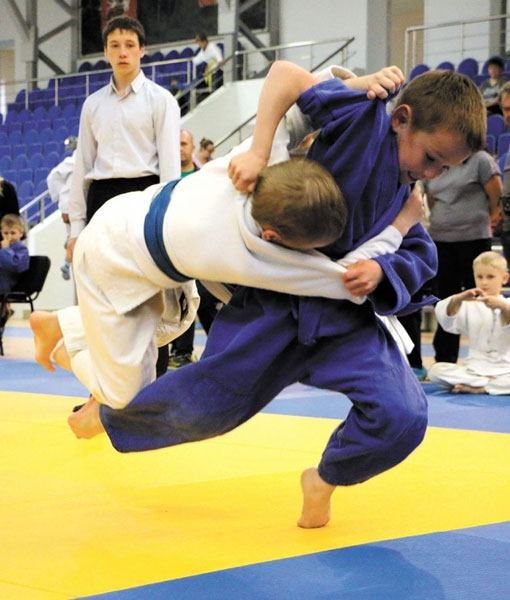
During the process, Kano discovered that many former jujitsu teachers had had to abandon their training to pursue alternative careers, with many choosing traditional osteopathy practices known as seikotsu-in. Kano started enquiring at local practices and eventually was introduced to a jujitsu teacher named Fukuda Hachinosuke, who had a small dojo where he taught five students.
Five years after beginning his jujitsu training, Kano himself started to teach. He soon began making changes to the battle system that he had been taught and formulating new, modern jujitsu rules. These new rules became known as judo, which combined throws and grappling with punches and kicks aimed at the most vulnerable parts of the opponent's body.
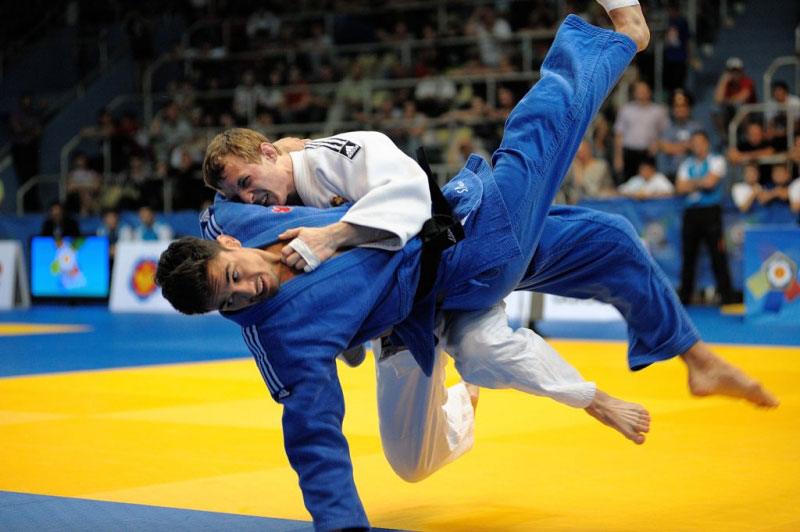
In Kano's first year of teaching his new judo system of martial arts, he had nine students. Today, it is estimated that there are 28 million people practicing judo around the world, with 8 million located solely in Japan. In 1907, judo became a mandatory aspect of the educational program in secondary schools in Japan. Judo was added to the Olympic sports line-up in 1964.
Judo focuses on throwing, grappling or lying down combat, and striking techniques. When it comes to lying down combat, judo encompasses three main techniques: holding, strangulation, and painful defenses applied to the joints of the hands. Note that painful techniques applied to the legs are prohibited in judo.
The parents of children studying judo tend to report that their children exhibit improved observation and attention skills, improved analytical skills, an excellent memory, and a strong sense of morality.
As with every form of martial arts, judo masters are highly skilled in their craft and know how to transmit knowledge to their students in a way that will prove most beneficial to the individual student's needs. Take, for example, the parable of the secret technique. In this story, a 10-year-old boy lost his left hand after a terrible accident. In order to raise his self-confidence, the boy's parents decided to sign him up to a judo club where he was under the instruction of a highly experienced judo master.
For three months, the master taught the boy only one judo technique. Confused as to why he wasn't being taught other techniques, the boy queried his master, asking, "Do you think that I should learn more techniques?". "This is the only one technique that you have to know", said his master. The young boy trusted his master implicitly and trained hard, perfecting his one technique.
Before long, the boy was entered into his first tournament. To his great surprise, he easily won the first two matches. The third match was more difficult, but despite the superior skill and technique of his opponent, the young boy won the match. He made his way to the finals of the tournament and was declared the ultimate winner.
Once the tournament was over, the boy approached his master and asked how he was able to win even though he only knew one technique. The master said, "You succeeded for two reasons. Firstly, you learned one of the most difficult throws in judo. Secondly, there is only one way to defend against this method, and that is to grab you by the left hand."
Taekwondo
With a name meaning "the way of breaking hands and feet," taekwondo is a style of martial arts from Korea, originally based on Japanese karate and traditional Korean martial arts from more than 2,000 years ago. Taekwondo is characterized by fast kicking techniques, spinning and jumping kicks, and head height kicks. Unlike other forms of martial arts, taekwondo involves 70 percent use of the legs and only 30 percent use of the arms and hands. The predominance of kicks in taekwondo is a nod to the ancient Korean warriors, who used kicks to dismount enemy riders out of their saddles.
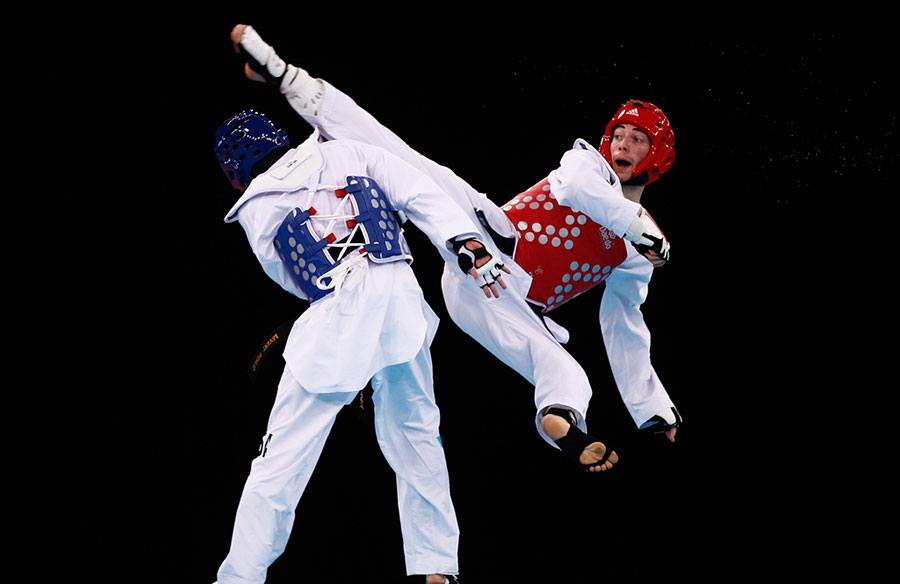
Taekwondo was created shortly after the Second World War by South Korean Army General Choi Hong Hi. During his childhood and youth, Korea was occupied by Japan. As he was a frail and sickly child, his parents had concerns about his health and well-being and signed him up to a local school of martial arts, where he studied both karate and subak. Having trained in both styles, Choi Hong Hi began using both techniques at the same time.
In 1946, Choi Hong Hi was hired as a karate instructor for the Korean army. While instructing the Korean soldiers, Choi Hong Hi continued to refine and improve his way of teaching and the techniques he utilized. Over the course of the next 10 years, he created a new form of martial arts, now known as taekwondo.
Taekwondo has gone from strength to strength and was included as an Olympic demonstration sport at the Seoul Olympic Games in South Korea in 1988, and was added to the Olympic Games line-up at the Sydney Olympic Games in Australia in 2000.
When it comes to children's taekwondo training, the sport offers numerous benefits, both physical and psychological. Parents of children studying taekwondo report that children are healthier and stronger than they were before they commenced training. In some instances, taekwondo can improve serious health problems, such as correcting poor posture, strengthening the respiratory system of children prone to asthma, and strengthening the immune system of children prone to colds and influenza. Overall, children and adults who study taekwondo can expect to become strong and resilient, yet agile and flexible. In the event that they find themselves in a dangerous situation, they will have the skills and confidence needed to defend themselves or others.
One consideration that parents should make before choosing taekwondo is that, unlike karate and other forms of martial arts, most forms of taekwondo are contact sports. There are isolated taekwondo schools that teach a non-contact version of the martial art, however, children who participate in the contact version of the sport will need head protection by way of a specially made helmet.
Jujitsu
Jujitsu is an ancient martial art from Japan and is considered a precursor to many more modern forms, including judo, aikido, and karate. In Japanese, "ju" means soft, gentle, supple, or yielding; while "jitsu" is typically translated to mean art or technique. Together, jujitsu refers to the manipulation of the opponent's own force against themselves, rather than resisting and confronting it with one's own force.
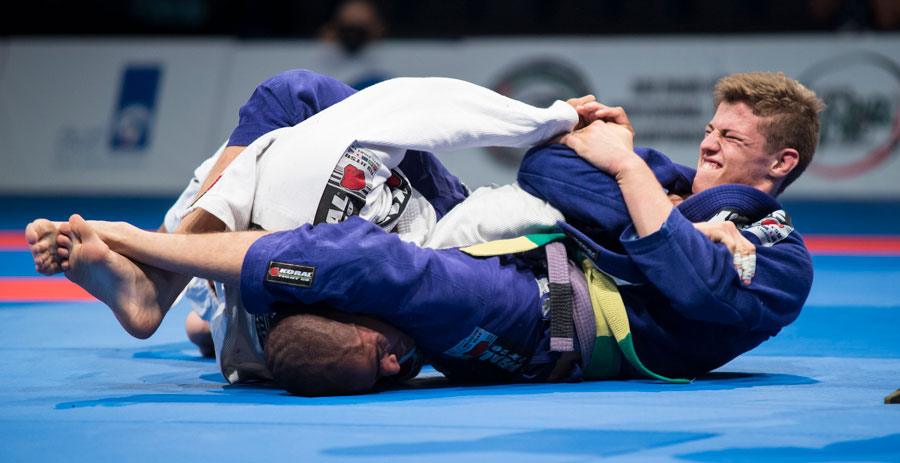
In ancient Chinese literature, jujitsu was associated with the secret knowledge of magic and witchcraft. Indeed, great warriors in ancient Japan were considered experienced magicians. The exact origins of the ancient Japanese art of jujitsu are unknown, yet Japanese legend tells of a physician and experienced martial artist from Nagasaki by the name of Akiyama Shirobei Yoshitoki. After spending time making observations in nature, the physician noticed how large tree branches would break under strong gusts of wind, while thin flexible branches of the willow tree could bend and resist the wind. When snow fell, he noticed that thick tree branches would break under the weight of the snow, while flexible thin branches would bend with the weight of the snow yet remain intact.
Akiyama Shirobei Yoshitoki took his observations as a metaphor, noting that the willow gives way to wind and snow in order to win against them. In 1631, he founded the Willow Art School and taught martial arts without weapons known as "soft art", or jujitsu in Japanese.
The basic principle behind jujitsu is not to resist the attack of your opponent, but to give way to your opponent and to direct their energy in the direction that you choose until your opponent is trapped. It is only then that the jujitsu student will turn their opponent's strength and actions against them. Jujitsu practitioners are also taught to use striking techniques to stop their opponent, put them off balance, and then administer a painful or suffocating technique.
The philosophy behind jujitsu is based on the idea that in the course of a person's life, they build and strengthen the four main walls of their "fortress": health, communication with others, knowledge, and work, and spirituality. The philosophy is that if even one wall of the house is damaged, the entire house will fall - just like a house of cards. For this reason, jujitsu students pay equal attention to all four aspects from childhood onwards.
The majority of jujitsu training is noncontact; however, it is always a good idea to confirm this with the instructors before your child's training starts.
Karate
Karate originated on the island of Okinawa at a time in history when Okinawa was independent of Japan. When Okinawa became part of the nation of Japan, karate was considered a Japanese style of martial art - but its true origins will always lie on the island of Okinawa. Renowned for the longevity of its inhabitants, Okinawa has an impressive proportion of its population over the age of one hundred years. In fact, there is a proverb in Okinawa that says, "60 years is just a bud. 80 years - the flower has blossomed". Many wonder if the secret to the longevity of the residents of Okinawa is their propensity to study karate for health and fitness.
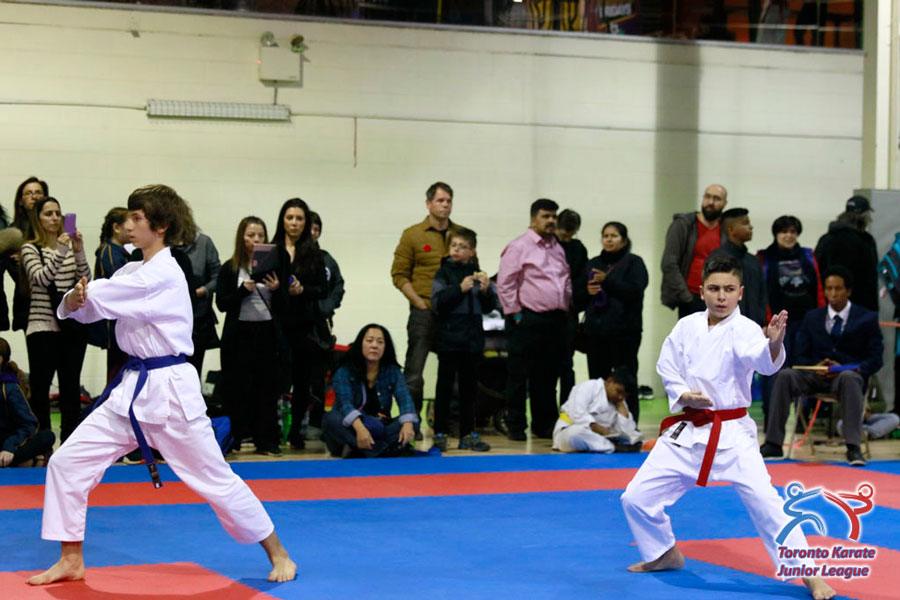
At the beginning of the 17th century, the island of Okinawa lost its independence and became subsumed by Japan. At the end of the 19th century, the youth in Okinawa were obliged to serve in the Japanese army. It was during the compulsory medical examinations that army doctors discovered the high level of physical development of the conscripts from Okinawa, and first came to understand that the fitness levels could be attributed to their karate studies.
At the beginning of the 20th century, karate was included in the curriculum for the majority of public schools in Okinawa. Over time, karate has become a popular and well-known hobby in many countries around the world, and in 2016 it was recognized as an official Olympic sport.
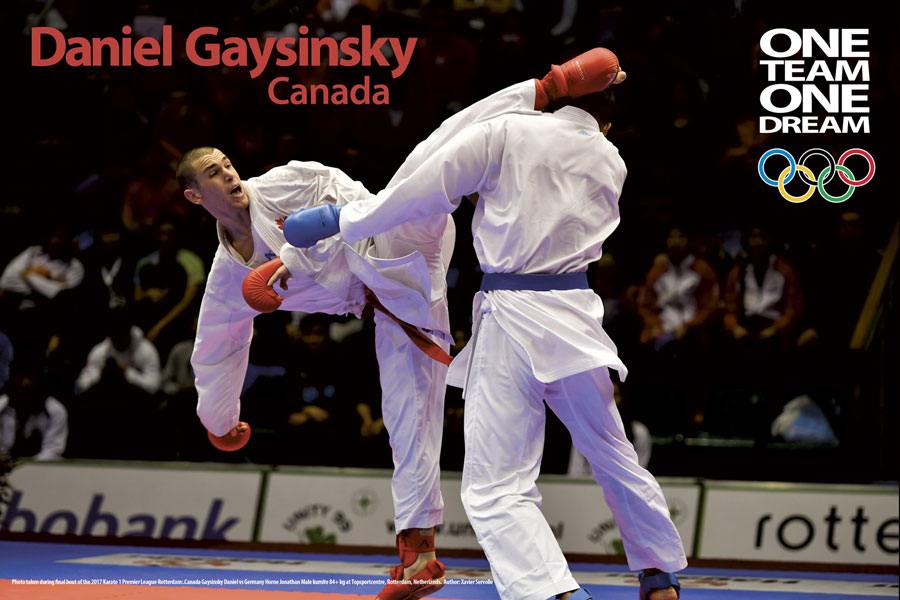
Karate students and masters are known for their ability to break bricks with their hands, feet, and even their heads. There is little wonder why the following catchphrase can often be said about those who study karate: "Anyone can offend a karate master, but not everyone will have enough time to apologize."
Karate masters are also known for their ability to defeat large predatory beasts while completely unarmed. Japanese lore is rich with stories of unarmed karate masters defending against what would normally be a lethal attack by a large predatory animal.
For example, take the story of the karate legend Gauguin Yamaguchi. As the story goes, in the 1930s Yamaguchi was sent by the Japanese government to China to perform intelligence operations. Yamaguchi also saw the assignment as a good opportunity to study Cempo in China more deeply.
However, Chinese authorities caught Yamaguchi. Knowing who they were dealing with, the Chinese offered Yamaguchi a choice: either a bullet in the forehead or being locked in a cage with a tiger. Yamaguchi chose the tiger.
The next day, Yamaguchi was taken to the courtyard of the prison, where a hungry tiger was imprisoned in a bamboo cage, surrounded by a crowd of onlookers. Yamaguchi was forced into the cage, and the door was locked.
The hungry tiger saw an easy meal and immediately sat back on its hind legs, adopting its pounce position. But before the tiger could make its lethal jump, Yamaguchi leaped forward and struck the tiger on the bridge of its nose with his fist. This single blow threw the predator to the ground, where he soon died. Yamaguchi was pardoned and sent home to Japan with honor.
This story, and countless others like it, prove that it is possible to defeat an enemy without being armed with a weapon. It is for this reason that karate has its name, which translates as "empty hand". Visually, karate masters are unarmed in the traditional sense of the word, but in fact, the karate master has much more than any physical weapon. Karate training provides a clear demonstration that humans already possess everything they need to defend themselves without any additional tools.
Today, karate is made up of more than 70 different concepts. Karate combines striking and kicking and emphasizes the need for speed and fast reactions. Stances are very important in karate, and students are taught to maintain their balance and endurance for extended periods of time.
The majority of karate schools for children adopt a non-contact teaching method, which does not allow any contact to the student's head. Beginners wear a white belt and do not engage in any contact or sparring until they reach a higher level. Karate students study all basic karate techniques including punches, blocks, kicks, and other moves. Students learn karate katas (forms), which present combinations of basic techniques in a logical sequence.
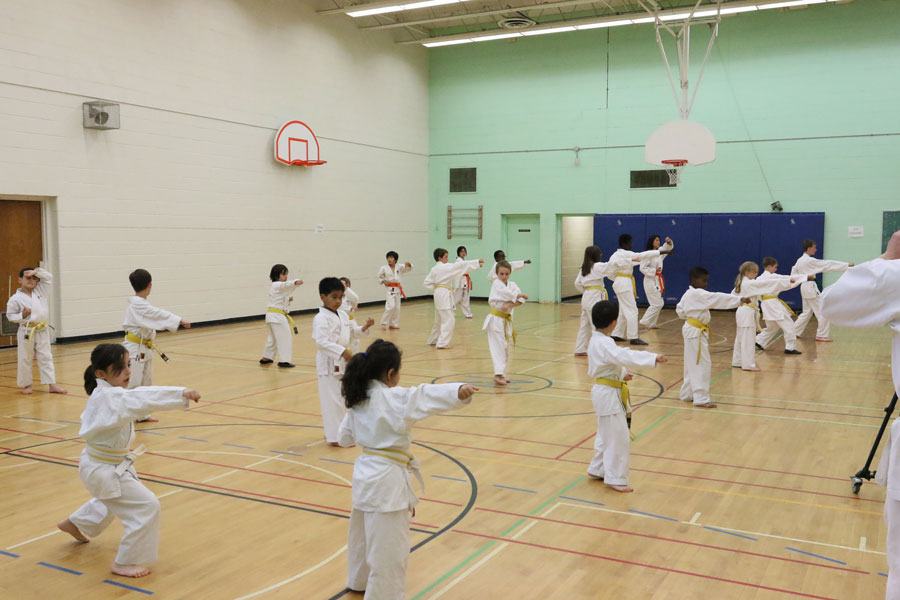
As karate students move higher up the ranks, they begin working with partners to improve their techniques. Of course, this partner work inevitably involves physical contact, but contact is limited and completely prohibited to the head. For this reason, karate is generally considered the safest form of martial art for children and teenagers.
Children can begin their karate training at any age, with some schools accepting children as young as three years old.
Karate classes for children are built on exercises that develop physical strength, endurance, and manual dexterity. Karate instruction is not limited to physical karate techniques but extends to a study of the principles of Japanese culture. Children learn self-control, respect for themselves and others, and how to recognize and correct their own mistakes. Parents often report that children become more self-sufficient and internally disciplined as a result of their karate training.
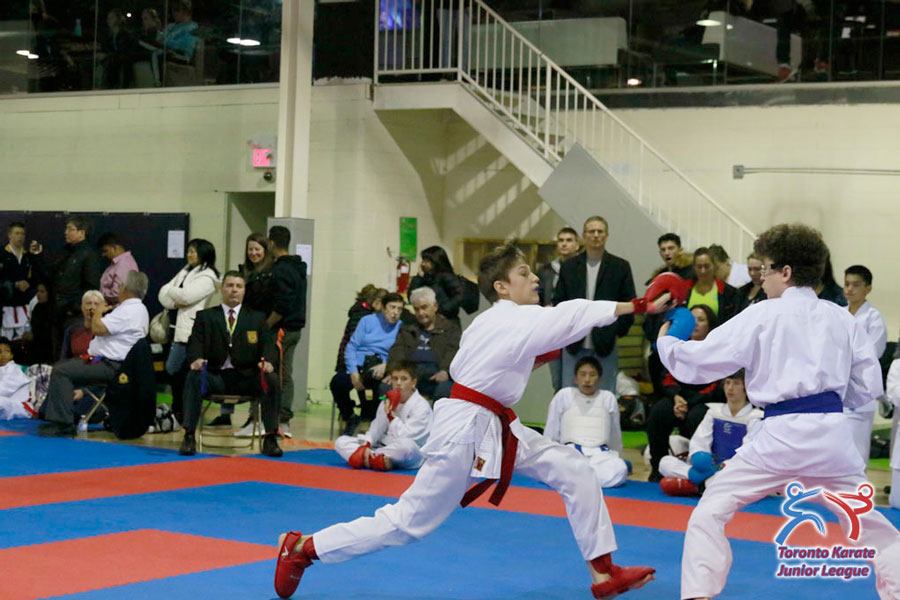
All martial arts training can have recognizable benefits for children, teenagers, and adults alike. But when it comes to the form of martial arts most suitable for children, many child psychologists and physical education teachers agree that karate training offers the deepest benefits for children, for the following reasons:
- The safety of children is guaranteed during karate training. Karate is a non-contact martial art and, as opposed to other forms of martial arts like some styles of taekwondo, children do not need to wear protective helmets.
- Karate is considered to be a more affordable martial art than other styles.
- In many areas, parents can choose between traditional karate training and a sports version of karate.
- Karate is a pastime that can be maintained throughout the student's life. If they so choose, the student could turn their childhood hobby into their adult career and go on to become an instructor or professional athlete.
- Since karate is a recognized Olympic sport, exceptional karate students have the opportunity to become Olympic champions.
For a deeper understanding of karate, please view the educational film for parents, "Karate in Ontario: The Uphill Battle – The Cost of Raising a Champion." The film answers many common questions about karate and provides parents with essential information about one of the world's most popular and prolific martial arts. Parents will understand the key components of the budget to grow a future champion, relevant age to start, how to choose a coach and club, travel expenses and tournaments, judges and rules and many others. Parents will meet 14 experts: respected instructors, referees, and judges share their experiences and reveal their secrets to success. This documentary is the first study and only known research about Karate in Canada.
You can watch trailers at this link.
Where to buy:
- Buy and watch online at Amazon here (streaming online video) or watch Amazon Prime video for free.
- Order your DVD or BRD here.
About the Filmmaker
This documentary was directed by Maria Morgunova, Director of INVISION PRO, a media company in Toronto, Ontario. Maria’s background includes over 10 years’ experience in journalism and the film and video industry as a videographer, journalist, film editor, short-story producer, and director of TV talk shows. Maria holds an MA in Arts and has created success stories and programs for the corporate world, broadcast television, and PR companies.
About INVISION PRO
Independent Vision and Production is a media company located in Toronto, Ontario, Canada. INVISION PRO produces quality documentaries, B2B marketing videos, short stories, and music videos.





